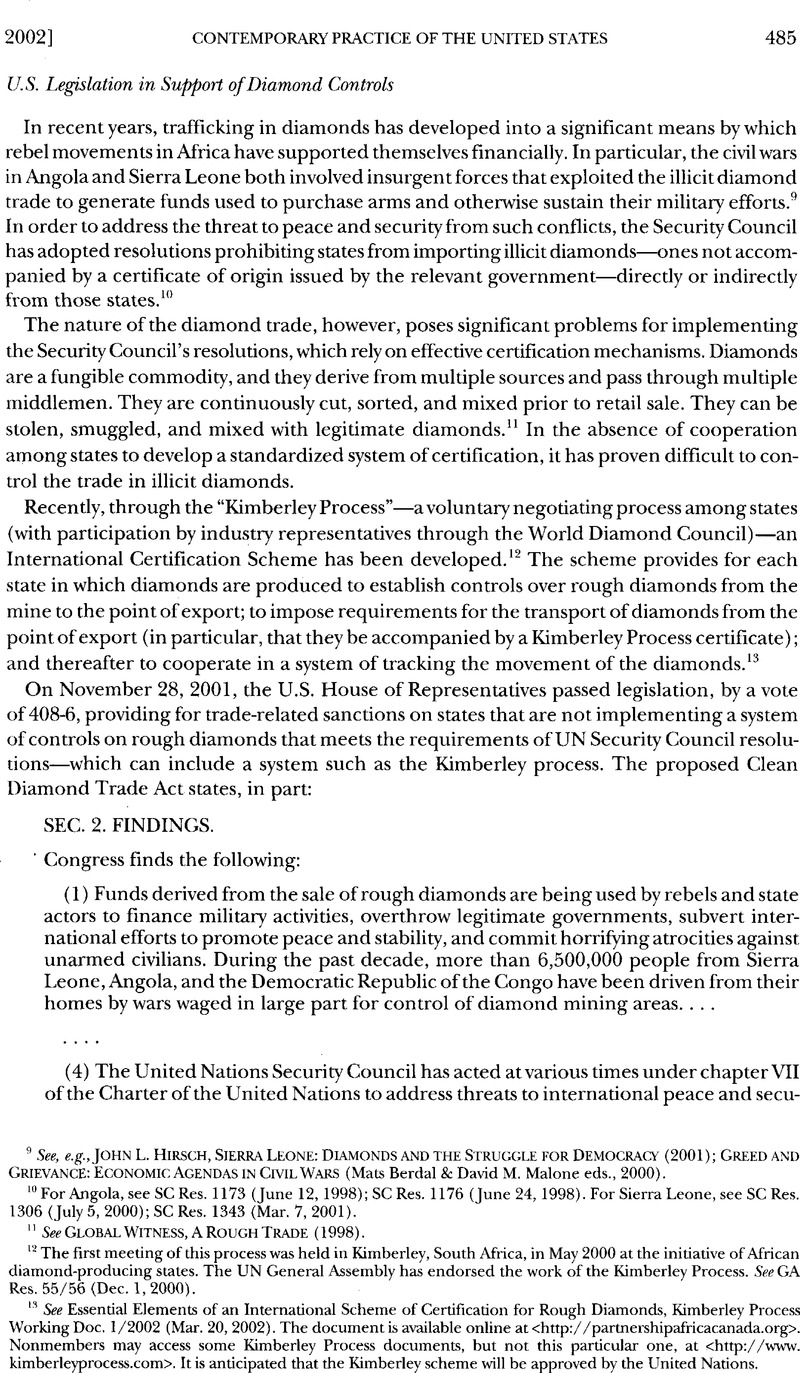No CrossRef data available.
Published online by Cambridge University Press: 10 March 2017

9 See, e.g., L, John. Hirsch, , Sierra Leone: Diamonds and the Struggle for Democracy (2001)Google Scholar; Greed and Grievance: Economic Agendas in Civil Wars (Mats Berdal & David M. Malone eds., 2000).
10 For Angola, see SC Res. 1173 (June 12, 1998); SC Res. 1176 (June 24, 1998). For Sierra Leone, see SC Res. 1306 (July 5, 2000); SC Res. 1343 (Mar. 7, 2001).
11 See Global Witness, A Rough Trade (1998).
12 The first meeting of this process was held in Kimberley, South Africa, in May 2000 at the initiative of African diamond-producing states. The UN General Assembly has endorsed the work of the Kimberley Process. See GA Res. 55/56 (Dec. 1, 2000).
13 See Essential Elements of an International Scheme of Certification for Rough Diamonds, Kimberley Process Working Doc. 1/2002 (Mar. 20, 2002). The document is available online at <http://partnershipafricacanada.org>. Nonmembers may access some Kimberley Process documents, but not this particular one, at <http://www.kimberleyprocess.com>. It is anticipated that the Kimberley scheme will be approved by the United Nations.
14 H.R. 2722, 107th Cong. (2001).
15 See S. 787, 107th Cong. (2001); S. 1084, 107th Cong. (2001).